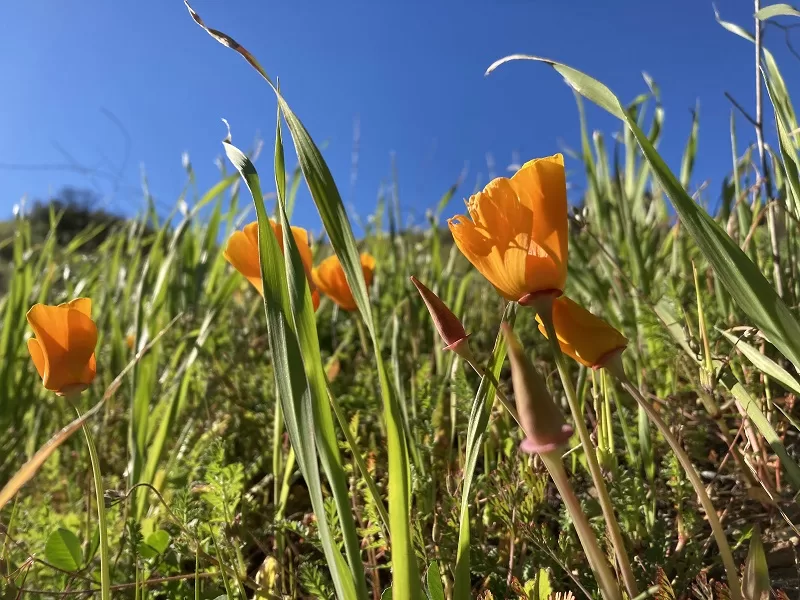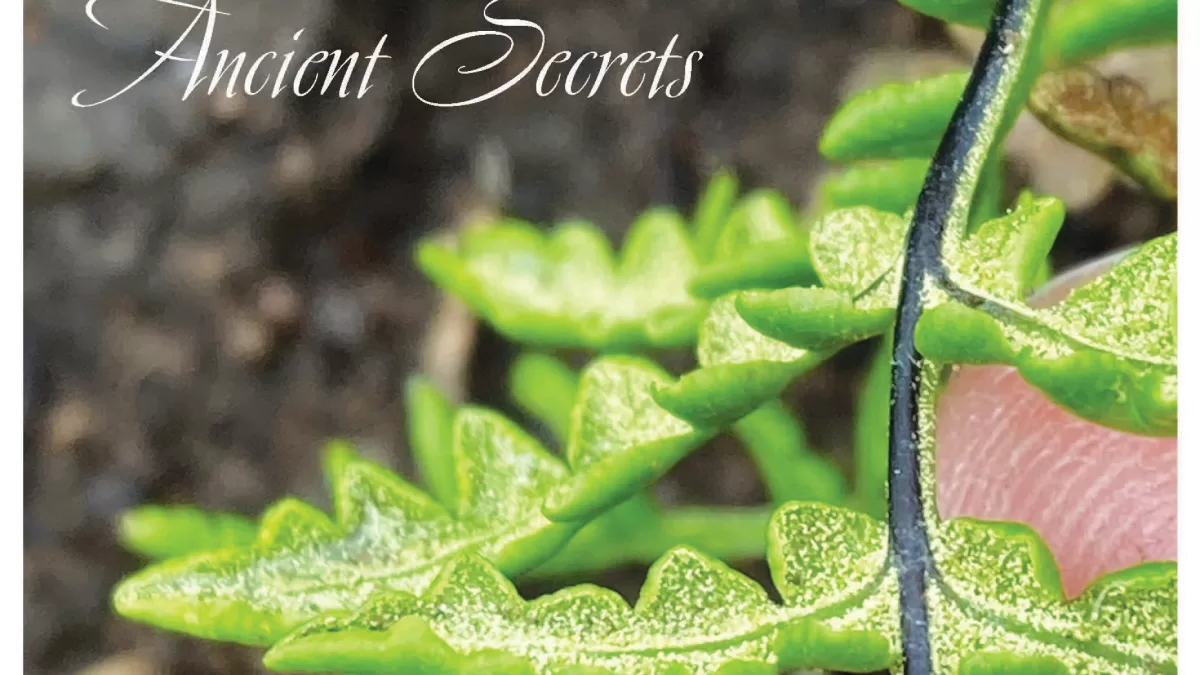ON THE COVER:
“Nature’s first green is gold/Her hardest hue to hold…” writes poet Robert Frost. That is certainly true of the aptly named goldback fern, Pentagramma triangularis, which hides an ephemeral golden treasure of spores behind each triangular frond. January’s abundant rain has made February the perfect time to look for the surprisingly abundant native fern species of the Santa Monica Mountains. This amazing family of plants evolved in a world dominated by dinosaurs and continues to thrive in even the most unlikely places in the local mountains, despite drought and climate change. Learn more in our Discover section. Photo by Suzanne Guldimann
Los Angeles said a final farewell to mountain lion P-22 on February 4. A celebration of life event honoring the big cat drew thousands to the Greek Theater in Hollywood and was streamed live to an even larger audience.
P-22 was born in the Santa Monica Mountains not far from Topanga. He successfully navigated his way through some of the densest urban development in California, crossing the 101 and 405 freeways to take up residence as the sole mountain lion in Griffith Park. He was old for a wild mountain lion, and had health issues related to age and to rodenticide exposure, but he died not of old age, but because he was struck by a vehicle and mortally injured. In the end, this remarkable cat met the grisly fate he had avoided for more than 10 years.
P-22’s journey inspired not only Angelenos but the world, and in the more than ten years that he reigned as solitary sovereign of his small island of wilderness at the heart of Los Angeles, he became the poster cat for urban wildlife coexistence, and for the need for wildlife crossings and connectivity. His death lends urgency to that need.
Beth Pratt, who is a regional director for the National Wildlife Federation, gave P-22 his voice, publicizing his plight, advocating for him and his wild relatives trapped in their own isolated and continually shrinking islands of wilderness. She was aided by National Geographic photographer Steve Winter, whose stellar remote camera pictures made P-22 a Hollywood icon. The photos and the story touched the hearts of people around the world.
P-22 was the catalyst that ultimately led to the Wallis Annenberg Liberty Canyon Wildlife Crossing over the 101 freeway in Agoura Hills. It’s the biggest wildlife crossing of its kind, and it is in the process of being built. The need was there and had been recognized for almost 20 years, but the project became a reality because of P-22, and only because Beth Pratt and a small army of volunteers, activists and advocates were moved by him to take action.
In almost every environmental success story there is an individual or a small group of volunteers who work for change. They don’t always receive credit or notice, but they are the ones who make the difference.
P-22 is gone, but his legacy will live on, and the movement that was inspired by his life will continue to move forward, pushing for new protections for wildlife corridors, safer routes for wildlife to cross roads and urban areas, and open space conservation.
“[P-22] made us more human, made us connect more to that wild place in ourselves,” Beth Pratt said at the farewell event. “We are part of nature, and he reminded us of that.”
The wildlife crossing at Liberty Canyon is well underway. Work has begun on the supports for the bridge. There are plans now for more wildlife crossings, and a concerted push for funding that has reached the top levels of government.
There may never be another mountain lion in Griffith Park, but P-22 will continue to be an inspiration, and his story may just have been enough to tip the scales in favor of his surviving relatives in the Santa Monica Mountains. Their future remains precarious, but with wildlife crossings and fewer toxic rodenticides in the environment, our big cats may have a chance, thanks to P-22, and to people like Beth Pratt.
Here in the Santa Monica Mountains most residents are aware of our wild neighbors and value them, but vehicle strikes continue to be a major cause of mortality for our dwindling mountain lion population and for many other species. Slowing down on canyon roads, staying alert, and not driving distracted can help save not only wildlife but our neighbors and ourselves. It’s one thing we can all do to help protect wildlife, especially with spring approaching, and more wildlife activity.

The Santa Monica Mountains are exceptionally lush and green this month—the perfect time to take a walk on a favorite trail. It’s too soon to tell if we will have enough rain for a strong wildflower season, but the early bloomers have already begun. If you know where to look, there are lupins, poppies, and padre’s shooting stars, and it’s hard to miss the ceanothus, which is covering the hills with a dust of floral snow. What could be a lovelier Valentine?
Stay safe, be well. Happy Valentine’s Day!





